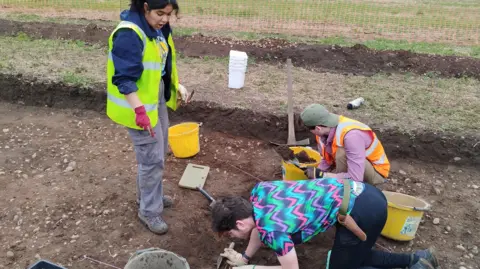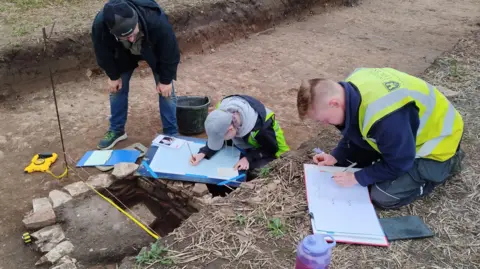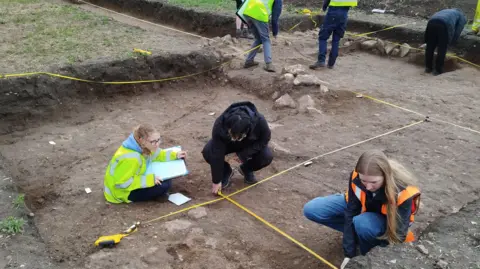'Roman villa' unearthed by archaeology students
 University of Leicester
University of LeicesterArchaeology students say they have uncovered the remains of a Roman villa in the Leicestershire countryside that likely dates back to the 2nd Century.
The University of Leicester team unearthed the building, which is thought to be about 230ft (70m) long.
The university said the find would "provide valuable new insight into Roman country houses in rural Britain".
It comes three years after archaeologists from the university discovered a Roman villa beneath a farmer's field in Rutland, which featured a Trojan War mosaic.
 University of Leicester
University of LeicesterThe two-week dig took place in May, and was run as a field school for first-year students, with most experiencing their first taste of an archaeological dig.
They were supervised by experienced archaeologists from University of Leicester Archaeological Services (ULAS).
The university said a number of Roman finds had been discovered at the site over the years, with recently identified cropmarks revealing prehistoric settlement ditches and the Roman villa.
Finds from the villa included fragments of brightly painted wall plaster and mosaic tiles.
This indicated the inhabitants decorated their rooms following the latest Roman fashions, the university said.
 University of Leicester
University of LeicesterDr Philippa Walton, lecturer in Roman Archaeology at the university, said the students had come away from the experience with "lots of new skills and really importantly, helped to increase our understanding of how people lived in Roman Leicestershire".
Everything was filmed for a Time Team feature, focused on the students' experience of their first dig.
Dr John Gater, from Time Team, said: “The magnetic survey revealed a complex landscape of features including ring ditches and field systems, while the ground penetrating radar (GPR) mapped the footprint of the building itself.
"Although most of the floor surfaces had been robbed out, it was amazing to see the large granite stone blocks which formed some of the wall foundations.”
Follow BBC Leicester on Facebook, on X, or on Instagram. Send your story ideas to [email protected] or via WhatsApp on 0808 100 2210.
